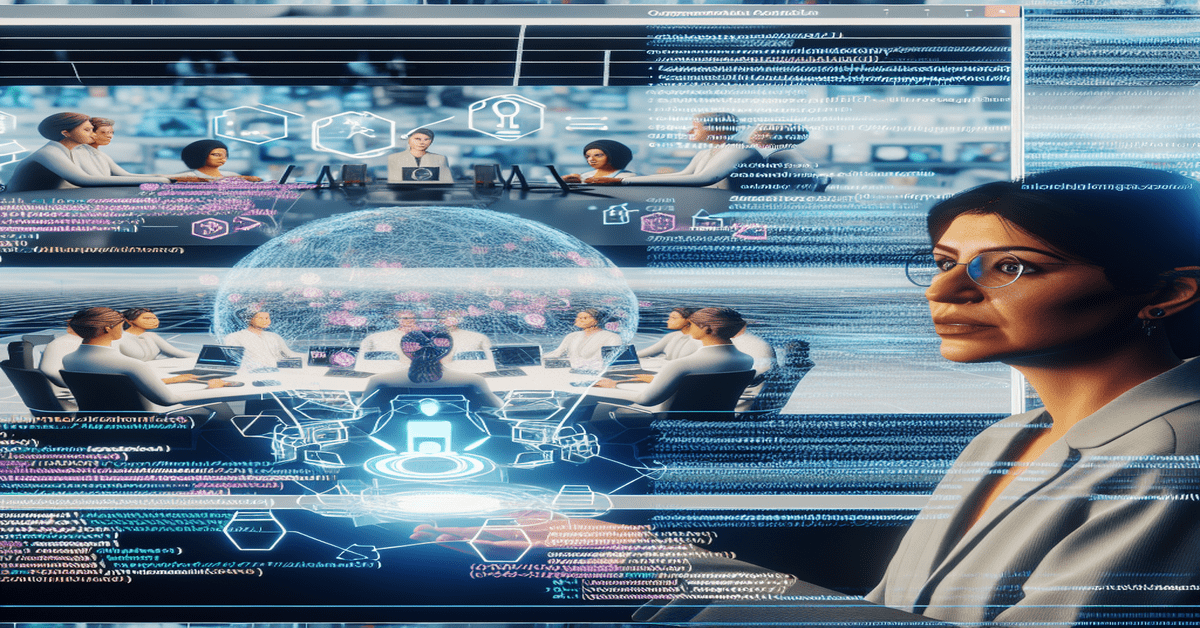The Challenges of Blocking China’s Access to U.S. AI Technology: A Closer Look
The rapid advancement of artificial intelligence (AI) has revolutionized industries worldwide, but it has also raised concerns about the potential misuse of these powerful technologies. Recent discussions have focused on the challenges associated with blocking Chinese companies, such as DeepSeek, from accessing and utilizing U.S.-developed AI. In this blog post, we’ll dive deeper into the complexities surrounding this issue and explore the implications for the global AI landscape.
The Global Nature of AI Development
One of the primary challenges in restricting access to AI technologies lies in the highly globalized nature of AI research and development. Researchers and companies from around the world collaborate, share data, and leverage open-source platforms to advance the field. This interconnectedness makes it difficult to isolate or restrict access to specific technologies without impacting the broader AI ecosystem.
Open-Source Software: A Double-Edged Sword
A significant portion of AI software is open-source, meaning it is freely available for anyone to use, modify, and distribute. While this approach has accelerated innovation and democratized access to AI, it also presents a challenge when it comes to controlling who can utilize these technologies. Chinese companies, like DeepSeek, can easily access and build upon open-source AI frameworks, making it challenging to enforce restrictions.
Navigating the Complex Supply Chain
The supply chain for AI technologies is intricate and involves numerous components and services sourced from various countries. From hardware components to cloud computing services, the global nature of the supply chain makes it difficult to identify and block specific Chinese entities from accessing these resources. Attempting to do so could potentially disrupt the entire supply chain and have unintended consequences for the development of AI worldwide.
Evasion Tactics: A Cat-and-Mouse Game
Chinese companies may employ various tactics to evade restrictions and continue accessing U.S.-developed AI technologies. These tactics could include setting up subsidiaries in other countries, using third-party intermediaries, or exploiting loopholes in existing regulations. As a result, enforcing restrictions becomes a complex game of cat-and-mouse, requiring constant vigilance and adaptation.
Balancing Innovation and National Security
While the desire to protect national security interests is understandable, overly restrictive measures could have unintended consequences on the development of AI technologies. **Collaboration and knowledge sharing** are essential drivers of innovation in the AI field. Limiting these interactions could slow down progress and hinder the ability of researchers and companies to push the boundaries of what’s possible.
Moreover, the rapid pace of AI development often outpaces the ability of regulations to keep up. Existing export control laws may not be sufficient or clear enough to address the nuances of AI technology transfer. Policymakers face the challenge of crafting regulations that balance national security concerns with the need for international collaboration and innovation.
The Way Forward
Addressing the challenges associated with blocking Chinese companies from accessing U.S.-developed AI technologies requires a multi-faceted approach. It involves strengthening existing regulations, promoting responsible AI development practices, and fostering international cooperation to establish common standards and guidelines.
However, it is essential to recognize that completely isolating China from the global AI ecosystem is not only difficult but may also be counterproductive. Instead, the focus should be on **promoting transparency**, **accountability**, and **ethical considerations** in AI development across all nations. By working together to establish a framework for responsible AI innovation, we can harness the power of these technologies while mitigating the risks of misuse.
Conclusion
The challenges surrounding the blocking of Chinese companies from accessing U.S.-developed AI technologies highlight the complexities of the global AI landscape. The interconnected nature of research and development, the prevalence of open-source software, and the intricate supply chain make it difficult to enforce restrictions effectively.
As we navigate this uncharted territory, it is crucial to strike a balance between **national security**, **innovation**, and **international collaboration**. By engaging in constructive dialogue, establishing clear guidelines, and promoting responsible AI practices, we can work towards a future where the benefits of AI are realized while minimizing the risks.
Stay informed about the latest developments in AI and join the conversation by sharing your thoughts in the comments section below. Together, we can shape the future of this transformative technology.
#AI #NationalSecurity #Innovation #Collaboration #ResponsibleAI
-> Original article and inspiration provided by Reuters – Stephen Nellis, Krystal Hu, Jeffrey Dastin, Anna Tong, Katie Paul
-> Connect with one of our AI Strategists today at Opahl Technologies


